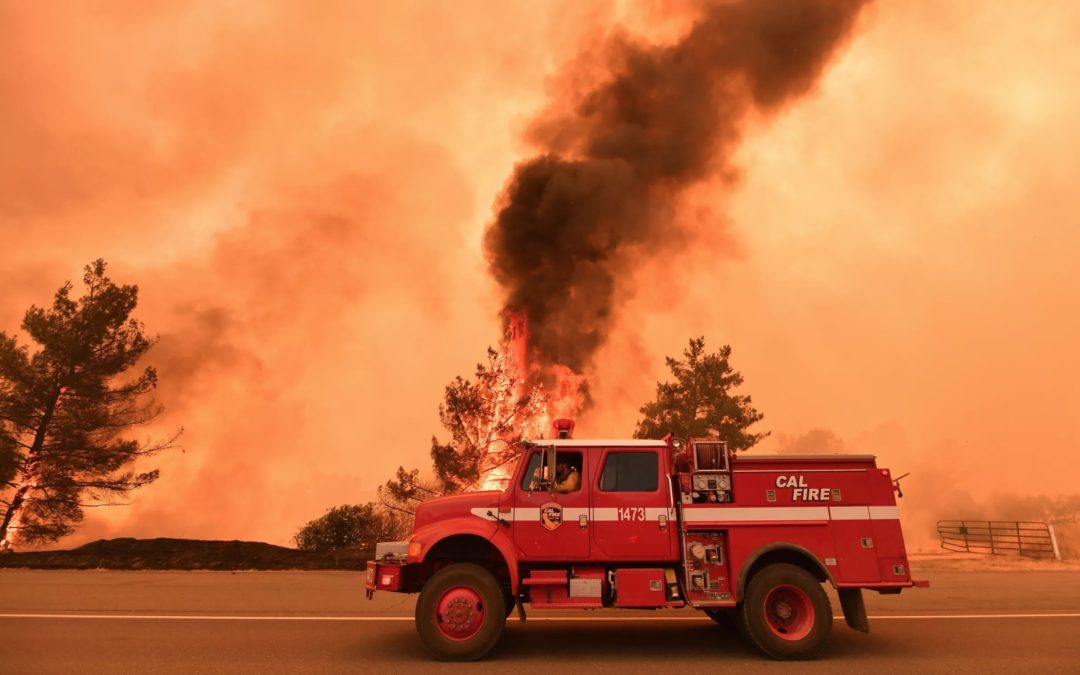SOURCE: Vox
DATE: July 24, 2018
SNIP: Wildfires have almost become a year-round threat in some parts of the western United States. From Colorado to California, it feels like the blazes from last year never went out.
Flames ignited forests and chaparral virtually nonstop in 2017, and the year ended with record infernos in Southern California that burned well into 2018.
Officials don’t refer to “fire seasons anymore but rather to fire years,” Jennifer Jones, a spokesperson for the National Interagency Fire Center, told me in an email.
The Ferguson Fire near Yosemite National Park has already burned more than 36,000 acres, an area more than 42 times the size of Central Park in Manhattan, since igniting on July 13. More than 3,000 firefighters from as far away as Virginia are fighting the blaze. As of Tuesday, the fire was only 26 percent contained and had led to the death of one firefighter, Braden Varney.
The fire sent thick plumes of smoke and ash into the air, leading to very unhealthy air quality alerts in the region.
Meanwhile, the Substation Fire near Portland, Oregon, has torched 79,000 acres and forced 75 households to evacuate. It’s just one of 160 wildfires that has scorched southern Oregon. As of Monday morning, the fire is 92 percent contained. In Colorado, wildfires have already ripped through more than 175,000 acres, and the ensuing rains have brought mudslides along the freshly denuded landscape.
And it’s likely to get worse. Many parts of the US are facing a higher than normal fire risk this year.
It’s an alarming echo of last year’s devastating fire season, which charred more than 10 million acres, making it one of the worst years in more than three decades.
A key thing to remember is that wildfires are ordinarily a natural phenomenon. Many parts of the US are primed to burn, and fires are vital to the ecosystem, restoring nutrients to the soil and clearing out decaying brush. Trees like the Jack pine only release their seeds after a fire. Plants like buckthorn need fires to germinate.
But the destruction from the gargantuan blazes we’ve seen in recent years is hardly natural; human activity is clearly making it worse.
So far, this year, it seems that many of the same mistakes that have put people at risk are being repeated. In California, some residents are rebuilding in the same fire zones where homes burned last year, spurred in part by insurance payouts.

